In vitro Gametogenesis (IVG): Science, Ethics, Policy, and Regulation
Earlier this year, in vitro gametogenesis (IVG) hit the headlines when scientists from Japan announced at the Third International Summit on Human Genome Editing that they had created mice with two fathers after successfully developing viable eggs from male mouse skin cells for the first time. In 2021, the same team successfully made sperm from mouse stem cells. IVG, also known as artificial gametes and in vitro-derived gametes, is the creation of eggs and sperm by reprogramming other cells, such as stem cells or skin cells, to become functional egg and sperm cells.
The scientific progress recently made with mice has not yet been replicated with human cells. However, this is on the horizon and scientific advances in human IVG raise a number of ethical, regulatory, and policy issues which need to be addressed. These issues were the focus of an IVG Policy Briefing Workshop, held at the Wellcome Collection in London, jointly delivered by The Future of Human Reproduction (FoHR) team and the Nuffield Council on Bioethics (NCoB).
Scientific progress and the potential applications, benefits, and risks of IVG
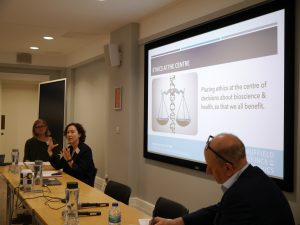
Following introductory talks from Danielle Hamm, Director of the NCoB and Professor Stephen Wilkinson, FoHR Principal Investigator, Dr John Appleby, Lecturer in Medical Ethics at Lancaster University, started the day by outlining the scientific background to IVG. Drawing on conversations with the scientific teams working in this area, his talk highlighted the ‘culture of secrecy’ surrounding IVG within the scientific community and suggested that advancements in human IVG are further along than is indicated in published research. There is, Appleby argued, a global race to bring these biotechnologies to market and the UK is falling behind in part because regulation is no longer fit for purpose.
It was clear from the opening presentation that, outside the UK, there is accelerated scientific progress in the field of human IVG. So, when it does become a scientific reality, what are the potential applications, benefits, and risks? This was the question raised next by Dr Nicola Williams, Wellcome Lecturer in Reproductive Ethics at Lancaster University. Beginning with the statistic that an estimated 30% of fertility patients are unable to produce viable gametes for reproduction, Williams suggested that IVG technologies will increase human reproductive opportunity and choice. For example, these technologies have the potential to enable infertile couples to produce genetically related offspring and to democratise reproduction by allowing individuals of any sex to produce both sperm and eggs.
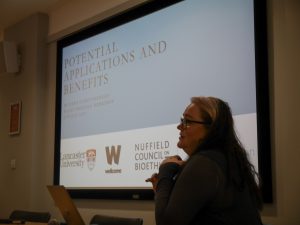
IVG could also transform gamete donation and procurement practices removing the risks and harms associated with egg donation and eradicating donor gamete scarcity. This would have the effect of increasing the supply of donor gametes for both research and treatment; reducing demand for donated gametes from those who would prefer genetically related offspring; offering an alternative to the use of animal models in embryo research; and reducing incidences of dubious gamete procurement practices. However, as Williams noted, with the benefits of IVG also come the risks including the possibility of gamete theft, unwitting parenthood, and inappropriate use of selective reproduction and/or genetic modification. The next panel, chaired by Professor Stephen Wilkinson, turned to discuss the ethics of IVG in more detail.
Ethics and IVG
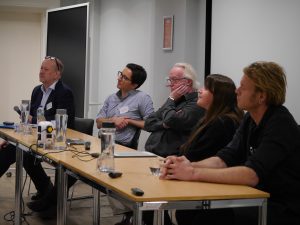
Opening the Ethics and IVG panel, Dr Seppe Segers, Assistant Professor of Biomedical Ethics at Maastricht University, began by raising a series of questions about genetic parenthood. What does genetic parenthood mean? When is someone a genetic parent? Will IVG lead to genetic parenthood? Describing IVG as a ‘hope technology’, because it carries the potential to resolve infertility and make reproduction more equitable, Segers argued that this might actually be a false hope given that human IVG is not currently technologically feasible. How far should we go to accommodate a preference for genetically related offspring and should IVG research fall within the scope of that duty? Underpinning this question is an assumption that genetic relatedness is of special value in parent-child relationships, but how highly should this be valued, is there risk that IVG will reinforce the dogma of genetic relatedness and how much genetic parenthood is enough? Ultimately, Segers concluded, if IVG does offer the choice of genetically related offspring (e.g. for same sex couples) there is a need to respect an individual’s autonomy and desire for genetic parenthood unless there are unacceptable risks or harmful consequences.
Some of those risks and consequences were explored in the next presentation by Dr Jonathan Pugh, Parfit-Radcliffe Richards Senior Research Fellow at the University of Oxford. Taking as his subject eugenics and IVG, Pugh began by citing Francis Galton’s 1883 definition of eugenics as ‘the science of improving stock’ and gave examples of ‘negative’ and ‘positive’ eugenics, which respectively seek to decrease ‘undesired’ traits and increase ‘desired’ traits. The term eugenics has extremely negative connotations because of its association with historical atrocities, but it has also already been used to describe reproductive practices such a prenatal testing for selective abortion and Pre-implementation Genetic Diagnosis (PGD) informing IVF embryo selection. So, what might the introduction of IVG change?
Pugh suggested that IVG has the potential to radically expand and refine the ability to select for or against particular traits because it will increase the number of ‘desirable’ gametes from which to selectively create embryos and produce a much larger number of embryos from which to select. IVG may also encourage and enable greater use of gene editing either through the genetic editing of the artificial gametes or the cells from which they will be derived. The potential uses of IVG technology raise important questions: What are the ‘good’/’bad’ traits that one might legitimately seek to influence with IVG? What beliefs underlie these evaluative claims? Who determines whether a trait is ‘good’ or ‘bad’? Is there a possibility of coercion? Recognising that there are both benefits to IVG and legitimate concerns that have been parsed in the language of eugenics, Pugh concluded by saying that, rather than prohibiting IVG based on concerns about eugenics, there should be discussion of how these might best be mitigated in policy and regulation.
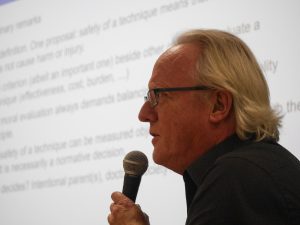
The next speaker, Professor Guido Pennings, Professor of Ethics and Bioethics at Ghent University, moved on to consider safety. Rejecting the notion that there is a single fixed conception of safety, he argued that, while the safety of a new reproductive technique can be measured objectively, what is done with that measurement is necessarily a normative decision and there is a choice to be made about which standards and comparators to use. The absolute standard offers an acceptable risk threshold whereby a technology can be introduced if the risk of a serious event is not higher than x%, but then how do we decide on the threshold and how is this justified? The comparative standard assesses the new technology against the alternatives. For example, is the risk higher than natural reproduction, than not applying the technique, or than using other similar techniques already available? There is also a need to consider the proportionality principle. Is the effort in proportion to the goals? Do the risks/disadvantages outweigh the benefits?
Turning specifically to IVG, Pennings suggested that, while society demands a certain standard of safety for the introduction of a new technique, once it is established, the level of accepted risk or harm is determined by the users. So, what if future users of IVG are willing to accept a high level of risk so that they can have a genetically related child? The presentation concluded with a recommendation that IVG should be accepted provided that the increased risk remains within acceptable limits. The process of balancing safety against other criteria has barely started for IVG but it is a complex exercise that will have to be done as soon as the technique becomes available for human reproductive purposes.
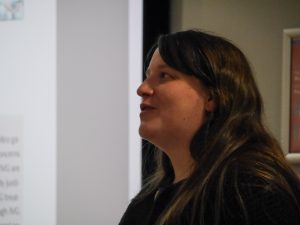
The final speaker on the IVG and Ethics panel, Dr Sarah Carter-Walshaw, Lecturer in Applied and Interdisciplinary Ethics at the University of Leeds, focused on IVG and egg donation and, in particular, on the question of whether IVG would (and should) signal the end of egg donation: If IVG was safe, effective, and inexpensive, when (if ever) would egg donation be ethically justifiable? Outlining the health risks associated with egg donation (e.g. pelvic infection, ovarian hyperstimulation syndrome), Carter-Walshaw also posited reasons why fertility patients may prefer egg donation to IVG and that there are benefits to donors that would be lost if IVG became the norm for gamete donation. She concluded that even with the potential benefits of IVG there would still be an ethically justifiable argument for the use of non-IVG donor eggs in certain circumstances.
The key takeaways from the morning were that scientific progress toward human IVG is advancing, even though some regulatory issues in the UK may be hampering that progress. There is, therefore, an urgent need for further discussions about the key issues that this technology will raise. Who should decide on the applications of IVG? Will it be regulated as a treatment for fertility only, or will it increase reproductive choice more broadly? How can the misuse of IVG be prevented? When will it be deemed sufficiently ‘safe’ to introduce and how should this be decided? How will the introduction of IVG impact on other reproductive practices such as egg donation? What role can/should policy and regulation play in supporting the responsible introduction of IVG? It is this final question, which provided the focus for the afternoon session.
Policy, regulation and IVG
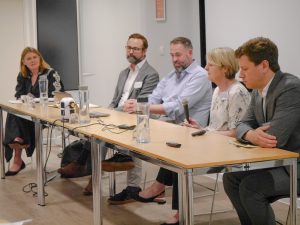
The first panel after lunch, chaired by Rebecca Mussell, Associate Director at the Nuffield Council on Bioethics, set out to consider the policy and regulatory implications of IVG. Dr John Appleby returned to discuss the shortfalls in the current UK regulatory framework focusing specifically on the 14-day rule, which restricts the culturing of human embryos for research purposes to a maximum of 14 days.
Appleby argued that, for IVG technological development in the UK to keep up with global competition, the 14-day rule needs to be extended to 28 days to accommodate advances in science in a responsible way. Describing the 14-28 day period as the ‘black box’ of human development, he reported that some UK scientists are advocating for an extension to the current rule as it will enable further understanding not only of the basic science of how humans develop but also of miscarriage, birth defects, in vitro fertilisation (IVF) and inheritable disease. The talk ended with the claim that many reasons for maintaining the 14-day rule are based on misunderstandings of the purpose of the science, and that there are no sound moral reasons not to extend it to 28 days.
Next, the focus shifted back to genetic relatedness but this time in the context of regulating for new reproductive technologies. Professor Nils Hoppe, Professor of Ethics and Law in the Life Sciences at the University of Hannover, and a Partner at Lawford Davies & Co, started with the proposition that ‘law is not very clever’ because it is based on clear categories and certainty when actual relationships are messy and often break out of these categories. To be efficient, legal frameworks reduce the complexity of real-life relationships to produce workable abstract categories. However, some of these frameworks are ‘scientifically tone deaf’ in some contexts and this has been evidenced particularly in cases involving genetics and genetic relatedness where contradictory judgments have been passed.
Given that some legal frameworks are scientifically tone deaf, Hoppe posed the question of whether entire legal frameworks might collapse under the weight of new scientific advances. Answering in the negative, he argued that, as the law is abstract, there are already mechanisms in place to create good law for regulating future technologies like IVG, and that technological and social change can already be accounted for by existing legal tools (delegation, interpretation, discretion, self-regulation etc.). The presentation ended with the suggestion that how we deal with new reproductive technologies might be a social problem rather than a legal problem.
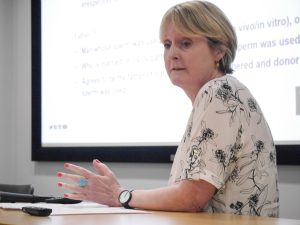
The next speaker, Professor Emily Jackson, Professor of Law at the London School of Economics and Political Science, shared her initial thoughts on how IVG might problematise the UK law on determining legal parenthood. Citing the current UK legal definitions of parenthood, she argued that it is an overly complicated mixture of gestational, genetic, relational, and intentional parenthood, which is not fit for purpose in certain situations that could arise if IVG technologies are introduced. For example, what if two men create an embryo using one man’s sperm and another’s IVG eggs and the embryo is implanted into a surrogate? Who are the child’s legal parents? Should the surrogate still be classed as the child’s mother? Should it be possible to register the man who provided the sperm as the father? What about the man who created the IVG eggs? Can he only become a parent via a parental order?
The issue of the limit on the number of legal parents a child can have (currently two) was also raised. Jackson suggested that there are already compelling reasons to recognise that children may have more than two parents (e.g. a same-sex female couple reproducing with a same-sex male couple, all of whom will play a parental role) and that the law will need to account for ‘multiplex’ parenting which could become more widespread with the introduction of IVG. The talk ended with an acknowledgment that while IVG and parenthood is complex, it may be a catalyst for bringing about a more progressive model of legal parenthood in the UK.
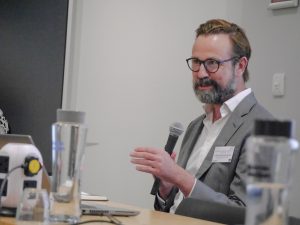
Responding to the speakers on the panel, James Lawford Davies, Partner at Lawford Davies & Co, described ‘legal parenthood’ as a trigger term for lawyers because there are many legal cases where it has gone badly wrong. In terms of the regulation of new technologies more generally, he suggested that, while the Warnock Committee Report has stood the test of time well, it would be useful to think about a more agile, responsive way of regulating for new reproductive technologies so that the use of specific techniques and procedures does not require a return to Parliament and the reopening of the Human Fertilisation and Embryology Act.
It was clear from the panel on law and IVG that, while broader legal frameworks may be able to adapt to account for the introduction of reproductive technologies like IVG, there are specific points of law that merit further scrutiny. If human IVG is going to become a possibility in the UK will the 14-day rule need to be extended to support scientific innovation? Might the introduction of IVG be a driver for changing the legal definition of parenthood? As with the questions raised by the panel on IVG and ethics, there is a need for further discussion about the legal issues raised by IVG and to bring policy makers into dialogue with scientists, academics and researchers sooner rather than later.
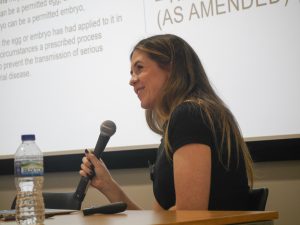
With this aim in mind, the final session of the workshop, chaired by Dr Nicola Williams, focused on a discussion of a policy briefing document on IVG. This document is being drafted jointly by the FoHR team and the NCoB as an output from the workshop. Professor Stephen Wilkinson and Dr Laura O’Donovan, Research Associate on the FoHR programme, reflected on the presentations from the day and how these will shape and inform the document, which will be completed in early 2024. It is hoped that the publication of this briefing paper will go some way toward taking forward the conversation about human IVG and the steps that will be needed before this technology is introduced.
The Future of Reproduction team would like to thank the Nuffield Council on Bioethics and all the presenters and attendees at the workshop for a rigorous and stimulating discussion of the policy implications of IVG.
The workshop was funded by a grant from the Faculty of Arts and Social Sciences Policy Fund at Lancaster University.
The full workshop programme can be found here: IVG Workshop Schedule
